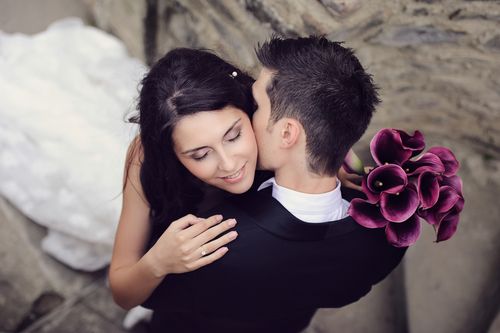 Your wedding ceremony might not demand as much planning attention as your reception, but that doesn’t mean there aren’t some important points to focus on. When you’re personalizing the ceremony with custom vows and other adjustments, you need to remain mindful that you don’t cut out or gloss over any critical pieces of text. For example, the declaration of intent plays a significant part in the overall process of getting married. If you’re not sure what the difference is between a declaration of intent vs vows, then review a few basic ceremony details.
Your wedding ceremony might not demand as much planning attention as your reception, but that doesn’t mean there aren’t some important points to focus on. When you’re personalizing the ceremony with custom vows and other adjustments, you need to remain mindful that you don’t cut out or gloss over any critical pieces of text. For example, the declaration of intent plays a significant part in the overall process of getting married. If you’re not sure what the difference is between a declaration of intent vs vows, then review a few basic ceremony details.
The Layout
The exact arrangement of a ceremony is going to depend largely on the type of event you’re holding. Still, there are a handful of general points that almost all events hit or are required to include by law. The event typically begins with a procession and is followed by some remarks from the officiant. Readings and rituals are sprinkled into the middle of the ceremony, with the final leg being dedicated to the exchange of vows, declaration of intent, exchange of rings, and announcement of the marriage.
It is important to note that the marriage declaration of intent is not the same as the vows. Some couples assume that by saying these words to each other, it means that there’s no real need for the officiant to interject. However, the declaration plays a pivotal part in binding your union.
What Is a Declaration of Intent?
Knowing what a declaration of intent is, is a useful way to see why it cannot be skipped or forgotten. Sometimes called a statement of commitment, this is the part of the ceremony when the officiant asks you and your partner whether you are getting married of your own accord and in the right state of mind. This is typically followed by the portion of the ceremony where the couple each says “I do” or some variation on the phrase. On a ceremonial side, this helps guests know when the actual marriage occurs.
However, the need for this declaration extends deeper than providing comfort and clarity to the crowd. According to law, this declaration must be clearly stated and agreed upon by both members of the union for the marriage to be official. Though it can seem silly, the wedding ceremony declaration of intent is the legal way to ensure that the couple is making the decision without coercion.
What Are the Vows?
The vows can be a bit more fun. Usually, the vows happen before the commitment statement and are written by the couple or read from a predetermined template. For example, custom vows aren’t allowed within all religious groups. In circumstances like this, the text will be more generic and spoken primarily by the officiant rather than the couple. Personalized vows offer a lot more flexibility, with couples being given the chance to speak from the heart for a moment.
If you want to include personalized vows in your ceremony, be sure to keep them brief. Saying more with less is the best way to ensure your guests stay engaged while you get sentimental.
Final Thoughts
The main point you need to take away from the wedding declaration of intent is that it needs to be a part of any ceremony for the marriage to be considered legally binding. While you also have to ensure the license is properly filled out and submitted, this takes place after the ceremony and is easier to manage. Forgetting the intent could add some major complications to the mix.
When the time comes to write your wedding script, there are some decisions that will need a bit of thought. Look over templates to get a feel for what a declaration of intent typically looks like, and you’ll have no trouble including this component.